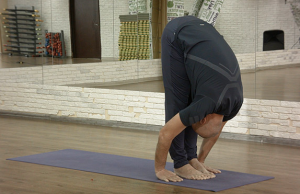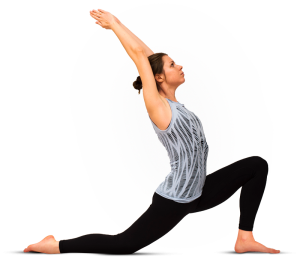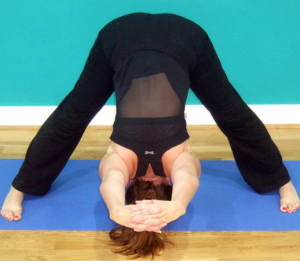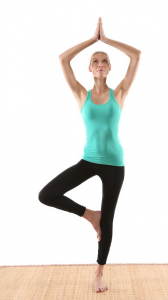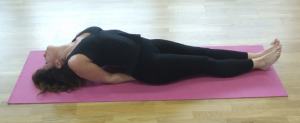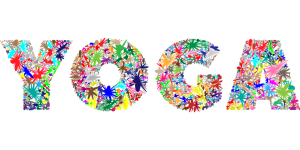 Written by Ece Gulsan, Chemical Engineering Ph.D. student
Written by Ece Gulsan, Chemical Engineering Ph.D. student
Every year I start the semester with full motivation and control over my tasks. I have the perfect agenda in hand, dozens of pens with different colors for each activity, a bunch of folders which I categorize for each assignment, and post-its all over my desk. However, as we approach the middle of the semester, things get overwhelming, I stress out, and lose my interest in my to-do list.
I’ve been studying for almost 20 years, so I’m pretty familiar with this pattern. We need to be productive to succeed, but our brains need a break, and those breaks should be planned strategically.
Practicing yoga is a perfect way to reset your mind and get back on track when you’re feeling stressed or unmotivated. The main idea of a yoga practice is to challenge the body with asanas (poses) that force us to concentrate on what is going on with our body, and keep our minds from wandering. At the end of the sequence, we feel more relaxed, balanced, and motivated for the rest of the day.
Here is a 30-minute all-levels yoga sequence which I specifically designed for improving concentration and decreasing the effects of stress on our bodies. Feel free to repeat between study sessions, before starting the day, or whenever you feel like you can use a break. You can make it more challenging by staying longer in the poses or repeating the sequence more than one time. Yoga mats can be purchased online or at large stores, and you can also use them at the Tufts gym.
Start with Child’s Pose – Balasana. On your hands and knees, focus on your breath, and turn your awareness inward. Your chest will rest on top of your thighs. Support your torso with your knees, and your forehead on your mat, or on a pillow. That helps you feel grounded. Stay in the pose until your inhaling and exhaling are synchronized, and roll back up on your knees. Avoid the pose if you have knee injuries. This pose calms the brain and because of the feeling of grounding, acts as a therapeutic posture to relieve stress.
Continue with a standing forward fold, Uttanasana. Stand up and bend your knees generously until your upper body lies on your thighs. Let your arms and head hang and press the heels firmly into the floor. Hands can be either on the floor or catch the opposite elbow. Forward falls increase the blood flow through brain, release the tension on neck and shoulders, and the feeling of “letting it go” has a restorative effect on body.
Move into a low lunge, Anjaneyasana. Step your right foot to the back of your mat and lower your knee on the floor. Bend your left knee and align it over the heel. Draw your tailbone down, lift your chest up to the ceiling, take your head back to look up, and raise your hands. Keep your shoulders away from your ears. As you inhale reach up, and as you exhale lower your hips to stretch hip flexors. Stay for a few long breath cycles and repeat with the other foot in front. The psoas muscle, the deepest muscle in our core, is one of the most vital muscles in our body. It is located in the lower lumbar area of the spine, extends through pelvis and connects upper and lower body with each other. Anjaneyasana specifically targets hip flexors and psoas, stretches them and helps you relieve stress, as well as opens your chest to boost confidence and enhance your mood.
Now approach your wide-legged standing forward bend, Prasarita Padottanasana. Go back to standing, face towards the long edge of your mat and step one leg to the other side of the mat with your legs wide apart. Make sure your outer feet are parallel to the short edge of your mat (a slight internal rotation of feet is recommended). Inhale and lengthen your spine, lift your chest, and bend forward on your exhale. Engage thigh muscles and make sure your weight is on the balls of your feet. You can interlace your fingers behind you and if it does not feel intense enough, bring your hands over your head. This pose relieves tension on your shoulders and targets the piriformis muscle, a tiny muscle located in the deep buttock, near the sciatica nerve. Contracted piriformis can create tension on shoulders and is very difficult to target.
Find your tree pose, Vrksasana. Find your way back to standing. Face towards to the short edge of your mat. Lift your left leg and hug your left knee. Bring the sole of your left foot to either the inside of your right thigh or calf, making sure it does not rest on your kneecap. Stay here for a few breaths. Keeping the eyes will closed makes thing even more challenging. If you are comfortable with your balance, send your left leg back and bring it parallel to the floor by pushing your heels to the back of the room. Hinge forward, level your hips, stretch your arms palms facing each other in warrior III, Virabhadra. Stay here for 30 seconds to one minute. Repeat with the other leg. Balance poses makes you focus on one point and prevents your mind from wondering.
Find a comfortable seated position for eagle arms pose, Garudasana. Bend your elbows and bring forearms together in front of your chest. If possible, cross your left arm underneath the right. Draw your shoulder blades away from each other and broaden your chest. Level your elbows with your eyes and keep your hands away from your face. Bend forward if you can. Repeat with the other arm on top. This pose is a great way to release tension on shoulders and relax the neck.
Before finishing your practice, take a moment at supported fish pose, Matsyasana. Use two yoga blocks or a pillow to support your shoulder blades and back of your head as you lie down. Slowly lower back on your props and relax your face, throat, and jaw. Matsyasanais a very effective chest opener to boost confidence. If it is supported, feeling of grounding has a therapeutic effect on body.
Seal your practice by laying on your mat and embracing the effects of your poses. Observe where your mind goes and try to bring your awareness inwards. Focus on your breath, and appreciate the fact that you were able to practice today.


